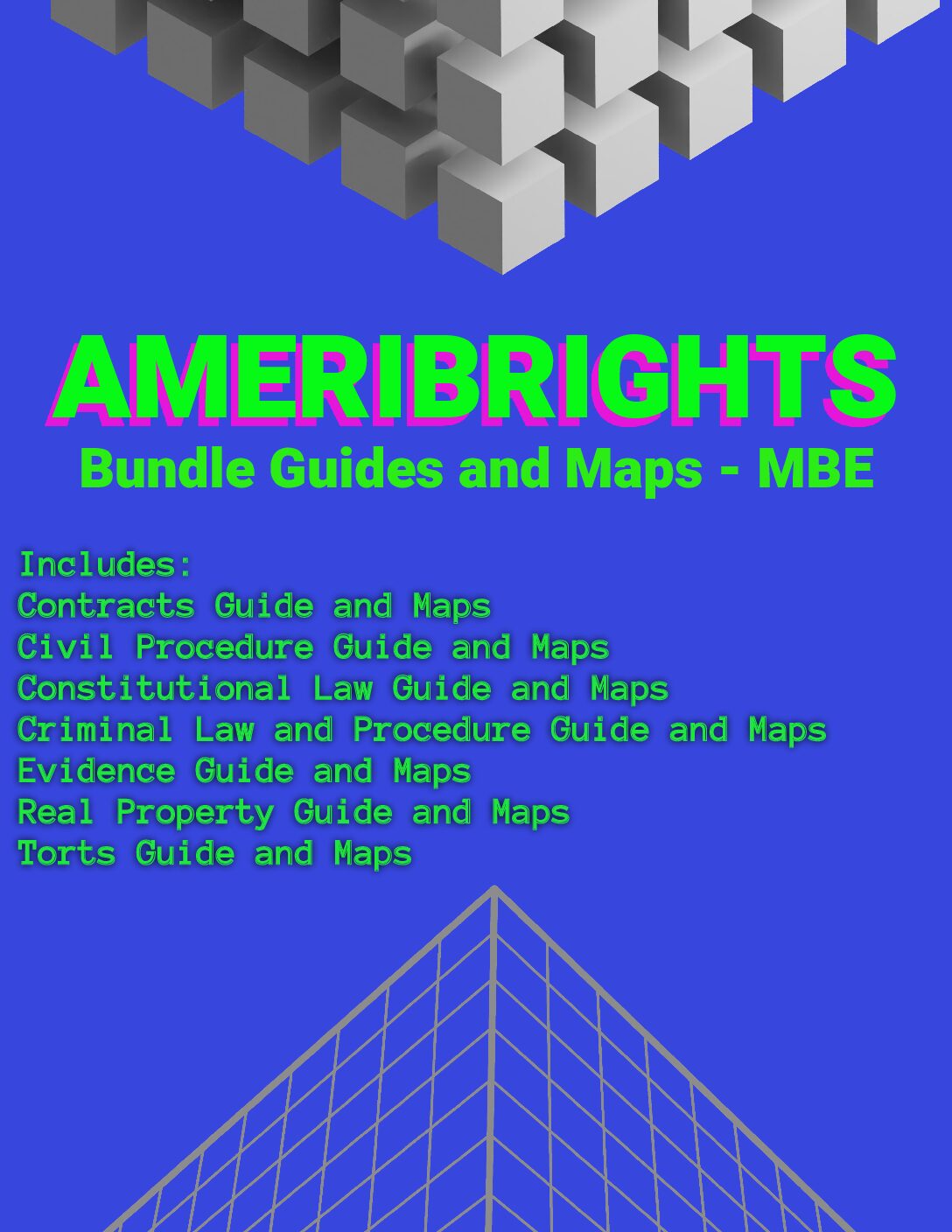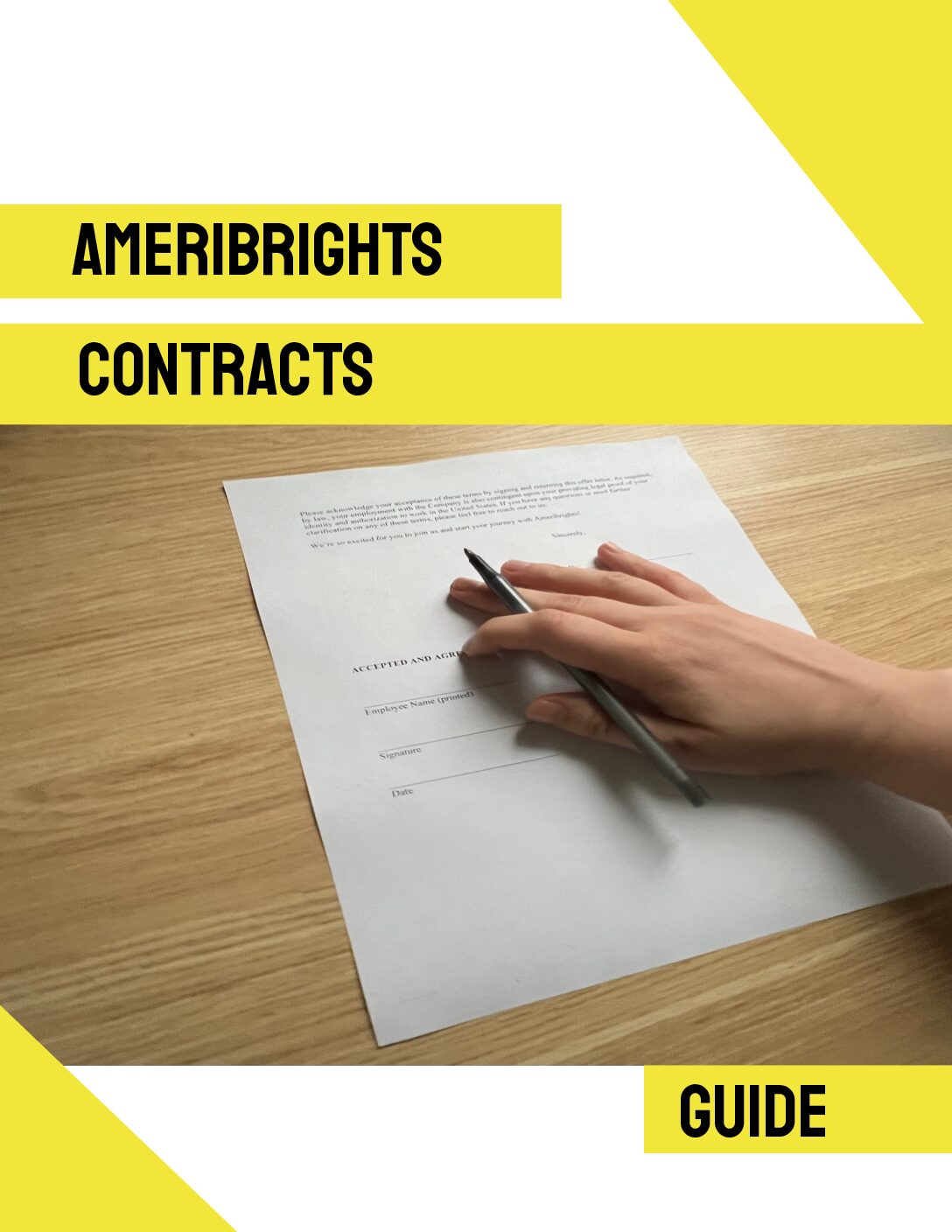How to Study for the Bar Exam with ADHD

In this article
Let’s Be Honest: This Isn’t Easy
Let’s skip the generic advice.
If you’re trying to study for the bar and your brain refuses to cooperate — if you sit down with good intentions and somehow end up reorganizing your email folders, deep-diving a random hypo, or blank-staring at the same paragraph for an hour — this is for you.
Whether you have a formal ADHD diagnosis or just know that traditional study methods don’t work for your brain, you’re not broken — you just need a different approach.
This post isn’t about grinding harder. It’s about studying smarter — with strategies that work for the way your brain actually functions.
I also want to say this upfront: I know there are tons of articles out there that throw out a list of “top 10 tips” without much context. But personally, I don’t find it helpful unless I understand what the strategy is actually solving — and whether there’s science to back it up.
So that’s what I tried to do here:
Show you the why, point you to the science if you want to dig deeper, and give you clear, practical ways to try it out in your own routine.
This isn’t about following rules. It’s about finding what works for you — and doing more of that.
What Actually Helps: Real ADHD-Friendly Strategies
1. Build Daily Routines That Lighten the Load
People with ADHD often struggle with executive function — things like planning, starting tasks, and staying organized over time. Having consistent habits and routines can take some of the mental pressure off. This isn’t about perfection. It’s about creating structure you don’t have to think about every day.
A predictable morning routine, a go-to system for planning your day, and reliable reminder tools all reduce the cognitive effort it takes to stay focused. Over time, these habits can boost your accuracy, motivation, and follow-through — without relying on constant willpower.
Do This
- Start your day with a repeatable routine — same wake-up time, same “launch task” (ex: 1 flashcard review + tea).
- Use a daily planner, stick note, or whiteboard to lay out top priorities in order of importance.
- Automate your reminders using phone alerts, calendar pings, or alarms (the fewer decisions, the better).
- Pick the same “first study task” each day to create a predictable starting point.
- And yes — start with something you actually enjoy. Drink coffee from your Care Bears mug. Light a candle. Put on your “let’s go” playlist. Small comforts can cue your brain that it’s time to shift into study mode.
See FN1 linked below for more info.
2. Start with Something Easy
Initiating tasks can be very difficult for individuals with ADHD. This has to do with neurological differences that affect the ability to begin tasks – the task is viewed as complex or overwhelming. Starting with a simple, manageable task can help overcome this barrier by creating a sense of accomplishment and momentum.
Research suggests that breaking tasks into smaller, achievable steps can significantly improve task initiation and overall productivity.
Do This
- Begin with a Quick Win: Start your study session with a task that you find easy or enjoyable, such as reviewing flashcards or summarizing a familiar topic.
- Create a Study Routine: Establish a consistent routine where you begin each session with a specific, simple task. This can condition your brain to transition into study mode more smoothly.
- Keep a Go-To List: Make a list of low-effort “easy start” tasks you can pick from when you’re stuck — like outlining 1 hypo, reviewing 3 rules, or labeling topics in your notes.
- Use Visual Cues: Keep your easiest starter task visible — a sticky note on your desk, your first flashcard out, or your outline open — so it’s the first thing you see.
- Prep Your First Task the Night Before: Leave your outline open, flashcards on your desk, or a post-it with your first task visible — so you don’t waste energy figuring out where to begin.
See FN1 linked below for more info.
3. Use Active Recall
Let’s be honest — most bar prep advice is built around “sit down and grind.” And for a lot of people with ADHD, that’s a losing game.
It’s not just about attention. One of the biggest issues is encoding — the way your brain processes and stores new information. If your study method isn’t helping you encode deeply, it’s not going to stick — no matter how many hours you spend with the book open.
The problem? A lot of us were taught to study by highlighting, rereading, or cramming — methods that rely on shallow processing. They feel productive in the moment, but they rarely create lasting recall.
Active recall is different. Instead of just reviewing the material, you’re pulling the rule out of your brain — through flashcards, practice questions, or even saying it out loud. That effort strengthens encoding and turns passive exposure into real memory.
People with ADHD aren’t lacking motivation — they’ve just been handed strategies that don’t fit how their brain learns best. Active recall gives you a way out of that cycle. It’s not about grinding more. It’s about learning in a way that actually sticks.
Do This:
- Quiz yourself while you learn — not just after. Read a rule, then cover it and say or write it from memory.
- Use flashcards or Q&A-style materials that force you to pull the rule out of your head. (That’s why we write our Ameribrights guides in question-and-answer format — to make recall automatic, not passive.)
- Say it out loud — teaching it (even to your wall) helps lock it in.
- Turn hypos into patterns — instead of “Did I get it right?”, ask “What rule was that?” or “What would I change next time?”
- Write Without Notes – After reviewing a rule or concept, close your materials and try writing it out from scratch. Then check what you missed.
Looking for study tools that actually use active recall? Our Bar Exam Q&A guides break everything down into clear, focused questions — so you can review in organized, manageable chunks that actually stick.
See FN2 linked below for more info.
4. Spaced Repetition
Spaced repetition is a strategy where you review material at gradually increasing intervals — not all at once. You study something on Day 1, then again on Day 3, then Day 7, and so on. Each time you come back to it right before you’re about to forget.
This method takes advantage of how memory works — you strengthen the connection right as it’s starting to fade. That struggle to recall? That’s the point. It’s what makes your brain hold onto it longer.
It’s not about studying more. It’s about studying smarter — hitting the right material at the right time so it sticks.
Why It Helps ADHD Brains
For people with ADHD, memory issues often come from poor encoding — but also from not circling back once the material is out of sight. We forget what we don’t touch.
Spaced repetition builds review into your system. You don’t have to rely on memory to remember what you forgot — the schedule does that for you. It creates structure without rigidity, which makes it easier to stick with even when your energy or focus shifts from day to day.
Do This:
- Use a system — Anki, Quizlet, or even a Google Sheet — to track what you’ve reviewed and when to hit it again.
- Schedule your reviews:
→ Learn it → review on Day 1, then Day 3, then Day 7, then weekly - Focus on what’s fading — don’t re-review everything. Hit what’s slipping.
- Combine it with active recall — don’t just reread; quiz yourself again each time.
- Use Reminders or Apps: Set calendar alerts or use spaced-repetition apps that ping you when it’s time to review — so you don’t have to remember to remember.
See FN2, FN3, and FN4 linked below for more info.
5. Incorporate Movement into Your Study Routine
For some, trying to sit for hours with ADHD feels like being trapped in a straightjacket. You’re either bouncing your leg, zoning out, or switching tabs before you’ve even finished reading a rule. And it’s not because you’re not trying. It’s because your brain needs movement to focus.
Movement isn’t a distraction — it’s a tool. Short bursts of physical activity have been shown to improve attention almost immediately. Even light movement can help you concentrate better and feel more in control. Over time, regular physical activity also strengthens executive functions like planning, focus, and self-regulation — the exact skills that make bar prep harder for ADHD brains.
You don’t need a full workout. But adding in short movement breaks can make a big difference in how long you can stay on task and how well you retain what you study.
Do This:
- Pace while you review. Walk around the room with your flashcards or outline. (Yes, pacing helps. No, it’s not weird.)
- Stand up. Use a standing desk or just study while standing. Movement doesn’t have to be cardio — just don’t stay frozen.
- Change locations. If your brain’s stuck, sometimes all you need is a new view. Kitchen table? Porch? Bed? Rotate.
- Dance breaks. Every 30–60 minutes, throw on your favorite 90s hit and move it move it.
- Exercise breaks. Hop on a mini stepper, lift a few dumbbells, do a few squats — just 5–10 minutes is enough to wake your brain back up.
Ameribrights Tip: I’ve tried the treadmill under the desk and the mini stepper. Awkward silence. If you’re not super coordinated, it can be risky. Bad posture on a treadmill can throw off your whole alignment. And using a stepper while seated? You’re not really focused on your form — which means it’s easy to end up sore or out of balance. Movement is great for focus, but make sure it’s not working against your body.
See FN5 and FN6 linked below for more info.
6. Music as Mental Movement
Let’s get something straight: music isn’t background noise for everyone. For ADHD brains, it can act like mental movement — giving your mind the rhythm and stimulation it needs to actually sit down and focus.
You might not be physically moving, but the structure, dopamine boost, and emotional regulation can work just like movement does — helping you stay anchored and present.
What It Helps With:
- Task initiation – Starting is half the battle. A familiar playlist can cue your brain: : “It’s time to begin.”
- Focus – Steady beats or ambient tracks can help block out distractions and keep your attention locked in.
- Mood regulation – Music can reduce the emotional noise that makes studying harder than it needs to be.
This isn’t just a personal preference. Some research suggests that people with ADHD process timing and rhythm differently — and that music may help sharpen working memory, support impulse control, and boost cognitive performance.
Do This:
- Choose the Right Music: Opt for instrumental tracks with steady rhythms, such as lo-fi beats or classical music, to minimize distractions.
- Create a Study Playlist: Curate a playlist that signals your brain it’s time to focus, helping establish a routine.
- Use Music for Breaks: During short breaks, listen to upbeat music to rejuvenate and maintain energy levels.
- Use the Same “Start Song” Daily: Pick one track to play every time you sit down to study. Over time, it trains your brain: “this song = time to focus”.
- Save “Focus Tracks” Separately: Build a short playlist of only the songs that actually work for you, so you’re not skipping around or hunting for the right vibe.
Ameribrights Tip: Not all classical music is created equal — and what works for one person might totally derail another. Personally? Baroque is my go-to. That steady rhythm and structure do more for my focus than any generic “study” playlist ever could. It’s how I start every day — and honestly, it does more for me than any classical mixtape ever could.
See FN7 linked below for more info.
7. Embrace Flexibility in Your Schedule
You’ve probably seen advice like “Study in 25-minute blocks” or “Take a 10-minute break every hour.” And while that might work for some people, it doesn’t work for everyone — and it definitely doesn’t work every day.
That’s why in this post, we’re not giving you a set timing formula.
Some days, you’ll hit a groove and study for 45 minutes straight. Other days, 10 minutes might be all you’ve got. That doesn’t mean you’re off track — it means your brain needs something different today. That’s not failure. It’s just information.
The goal is momentum, not perfection.
Do This:
- Use timers and study blocks only if they’re helping you today. If the 15-minute timer feels like pressure or makes it harder to start, skip it. Flex the method to fit the moment.
- Let your attention guide the session. Some days you’ll go 45 minutes deep. Other days, 10 minutes is all you’ve got. That’s not inconsistency — that’s adaptability.
- Don’t treat a schedule shift as messing up. You didn’t “fall off.” You adjusted. That’s progress, too.
- Keep a few go-to “easy wins” ready. Review one flashcard, recopy one rule, or rewatch a short video. Small steps still count.
- Think rhythm, not rigidity. You don’t need a perfect routine. You just need to keep showing up in whatever way works today.
See FN8 linked below for more info.
8. Utilize Visual Aids (and Color-Coding . . . If It Helps You)
For individuals with ADHD, visual tools are more than just organizational aids—they’re essential strategies for enhancing focus and memory. Research shows that color-coding and visual cues can significantly improve attention and information retention. One study even found that students using color-coded materials performed better than those using plain grayscale — likely because visuals help organize information in a way that’s easier to process.
That said, color-coding isn’t deep processing. It won’t replace active recall — but it can make the hard stuff easier to work with. And if you’re color-blind or color doesn’t work for you, structure and layout can still do the job. Think symbols, shapes, spacing, and contrast. The goal is clarity — not aesthetics.
Ultimately, the use of visual cues taps into the visual processing strengths of individuals with ADHD, leveraging their ability to process visual information quickly and efficiently .
Do This:
- Create visual outlines or maps for each subject (use arrows, boxes, flowcharts — whatever makes sense to your brain). Look at our maps as an example (see sample preview)
- Color-code rules or topics by category, difficulty, or subject (e.g., red for “always tested,” blue for “watch the exceptions”).
- No color? Use bold, underlining, symbols (★ ! →), or spatial separation to show priority or relationships.
- Use sticky notes on your wall or mirror for rules you’re still learning — constant exposure helps it stick.
- Create one-pagers for tough topics — evidence objections, hearsay exceptions, equitable distribution — anything that overwhelms on the page.
See FN9 linked below for more info.
9. Practice with Real Questions and Track Real Progress
For ADHD bar takers, practice questions aren’t just study tools — they’re focus anchors. They provide structure, reduce decision fatigue, and create immediate feedback — all of which are especially important for ADHD brains.
In fact, research has shown that frequent, active engagement with material — especially when paired with immediate feedback — helps improve executive function, working memory, and attention regulation in individuals with ADHD. That’s exactly what bar questions do.
And tracking progress? That’s dopamine fuel. You’re not just collecting points — you’re building momentum.
Do This:
- Use real questions as structure. Instead of wondering what to study next, start with a question and work backward. That’s easier for ADHD brains than starting from a blank page.
- Write, outline, and annotate. These are active tasks — perfect for keeping your brain involved and off autopilot.
- Set specific, small goals. ADHD brains thrive on clarity. “Outline 1 essay” or “Answer 5 MBE Questions” is a task you can complete. “Study Evidence” is not.
- Track wins. Cross off what you complete. Use checkboxes, visual logs, or habit trackers — anything that gives your brain a “you did it” moment.
- Celebrate progress, not perfection. Bar prep is long. ADHD brains need consistent reward cues to stay motivated — even if that’s just saying, “I showed up today.”
10. Be Kind to Yourself
It’s common to encounter days where tasks remain unfinished or time management doesn’t go as planned. Instead of internalizing these moments as personal failures, think about reframing it. Learning to reframe — to step back and see a missed task or a chaotic day without beating yourself up — is key. It helps you to move on instead of spiraling.
Do This:
- Assess the day: What worked? What didn’t? Was it a focus issue, time management, or just too much on your plate?
- Name the win: Find one thing — no matter how small — that you did right. That still counts.
- Plan for tomorrow: What’s one change you can make based on what you learned today?
- Treat yo self: End of day reward (e.g., 30 min Nintendo or your favorite tv show)
- Give yourself credit: You showed up today and gave it your all.
Not About Studying Harder, It’s About Studying Smarter.
If you’ve read this far, you already know: the usual advice doesn’t always apply when you have ADHD. It’s not about forcing yourself into someone else’s schedule or pretending a system works just because it’s popular.
It’s about figuring out what actually helps you get started, stay engaged, and come back the next day.
That might look different from what you’ve been told bar prep “should” be — and that’s fine. You don’t need to do this perfectly. You just need to keep going in a way that works for your brain.
What matters is momentum.
Not precision.
Not aesthetics.
Not hours logged.
Just progress — however it happens.
If you’re looking for tools that actually work with the way you learn, check out our MBE Maps and Guides — designed to help you see the rules, not just memorize them.
Want more expert-backed strategies?
Check out our companion post: Expert Strategies for Bar Exam Success with ADHD or ADD — it dives deeper into how ADHD actually affects bar prep and how to work with your brain, not against it.
Congrats on making it this far
Now get the no-fluff, print-friendly version – 11 pages of just the to-dos. Great for checklists, planner or sticking to your wall with neon tape.
References
FN1: Kreider CM, Medina S, Slamka MR. Strategies for Coping with Time-Related and Productivity Challenges of Young People with Learning Disabilities and Attention-Deficit/Hyperactivity Disorder. Children (Basel). 2019 Feb 13;6(2):28. doi: 10.3390/children6020028. PMID: 30781837; PMCID: PMC6406620.
FN2: Minear ME, Coane JH, Cooney LH, Boland SC, Serrano JW. Is practice good enough? Retrieval benefits students with ADHD but does not compensate for poor encoding in unmedicated students. Front Psychol. 2023 Jul 20;14:1186566. doi: 10.3389/fpsyg.2023.1186566. PMID: 37546447; PMCID: PMC10397724.
FN3: Smolen P, Zhang Y, Byrne JH. The right time to learn: mechanisms and optimization of spaced learning. Nat Rev Neurosci. 2016 Feb.
FN4: Tabibian, B., Upadhyay, U., De, A., Zarezade, A., Schölkopf, B., & Gomez-Rodriguez, M. (2017). Optimizing Human Learning.
FN5: Smith, A. L., Hoza, B., Linnea, K., McQuade, J. D., Tomb, M., Vaughn, A. J., … & Hook, H. (2013). Pilot physical activity intervention reduces severity of ADHD symptoms in young children. Journal of Abnormal Child Psychology, 41(8), 1223–1235.
FN6: Christiansen, L., Beck, M. M., Bilenberg, N., Wienecke, J., Astrup, A., & Lundbye-Jensen, J. (2019). Effects of exercise on cognitive performance in children and adolescents with ADHD: Potential mechanisms and evidence-based recommendations. Journal of Clinical Medicine, 8(6), 841.
FN7: Saville P, Kinney C, Heiderscheit A, Himmerich H. Exploring the Intersection of ADHD and Music: A Systematic Review. Behav Sci (Basel). 2025 Jan 13;15(1):65. doi: 10.3390/bs15010065. PMID: 39851869; PMCID: PMC11762814.
FN8: Kreider CM, Medina S, Slamka MR. Strategies for Coping with Time-Related and Productivity Challenges of Young People with Learning Disabilities and Attention-Deficit/Hyperactivity Disorder. Children (Basel). 2019 Feb 13;6(2):28. doi: 10.3390/children6020028. PMID: 30781837; PMCID: PMC6406620.
FN9: Liu Y, Ma W, Guo X, Lin X, Wu C, Zhu T. Impacts of Color Coding on Programming Learning in Multimedia Learning: Moving Toward a Multimodal Methodology. Front Psychol. 2021 Dec 3;12:773328. doi: 10.3389/fpsyg.2021.773328. PMID: 34925175; PMCID: PMC8677832.
-
Bar Exam Preparation
The Ultimate Florida Bar Exam Study Guide Bundle
$343.00Original price was: $343.00.$275.00Current price is: $275.00. Add to cart -
Bar Exam Preparation
Bar Prep Made Easy: MBE Guide and Maps Bundle
$413.00Original price was: $413.00.$330.00Current price is: $330.00. Add to cart









